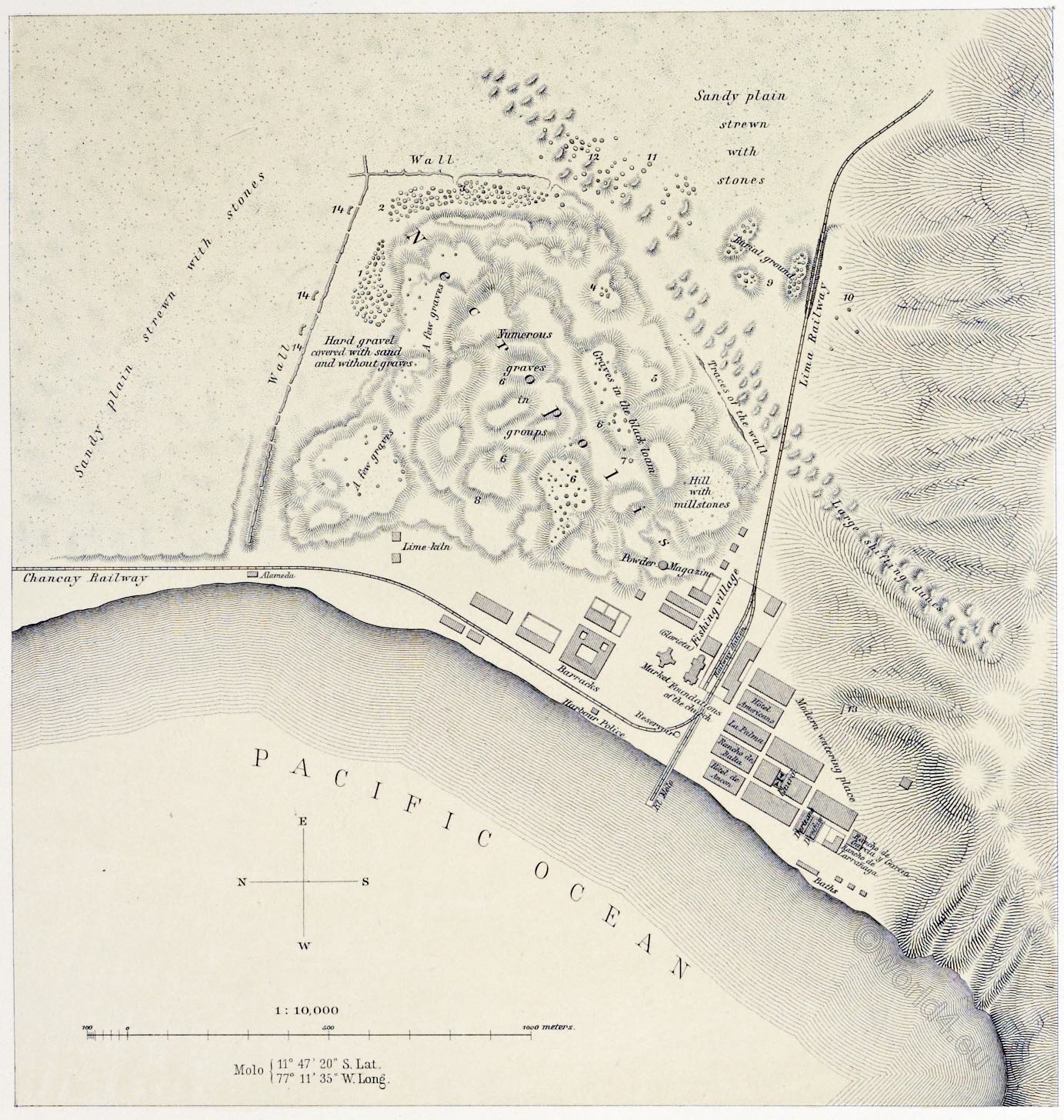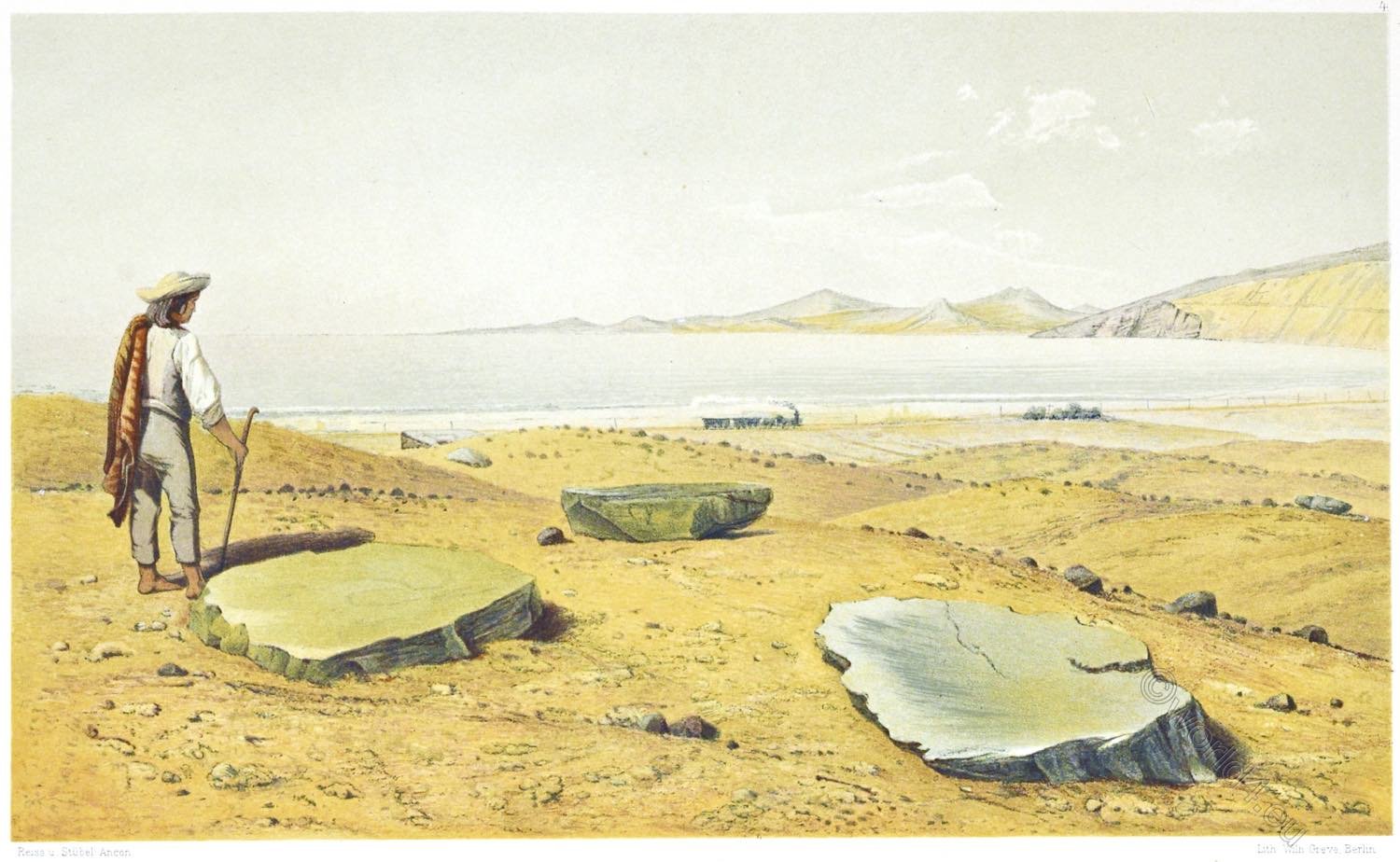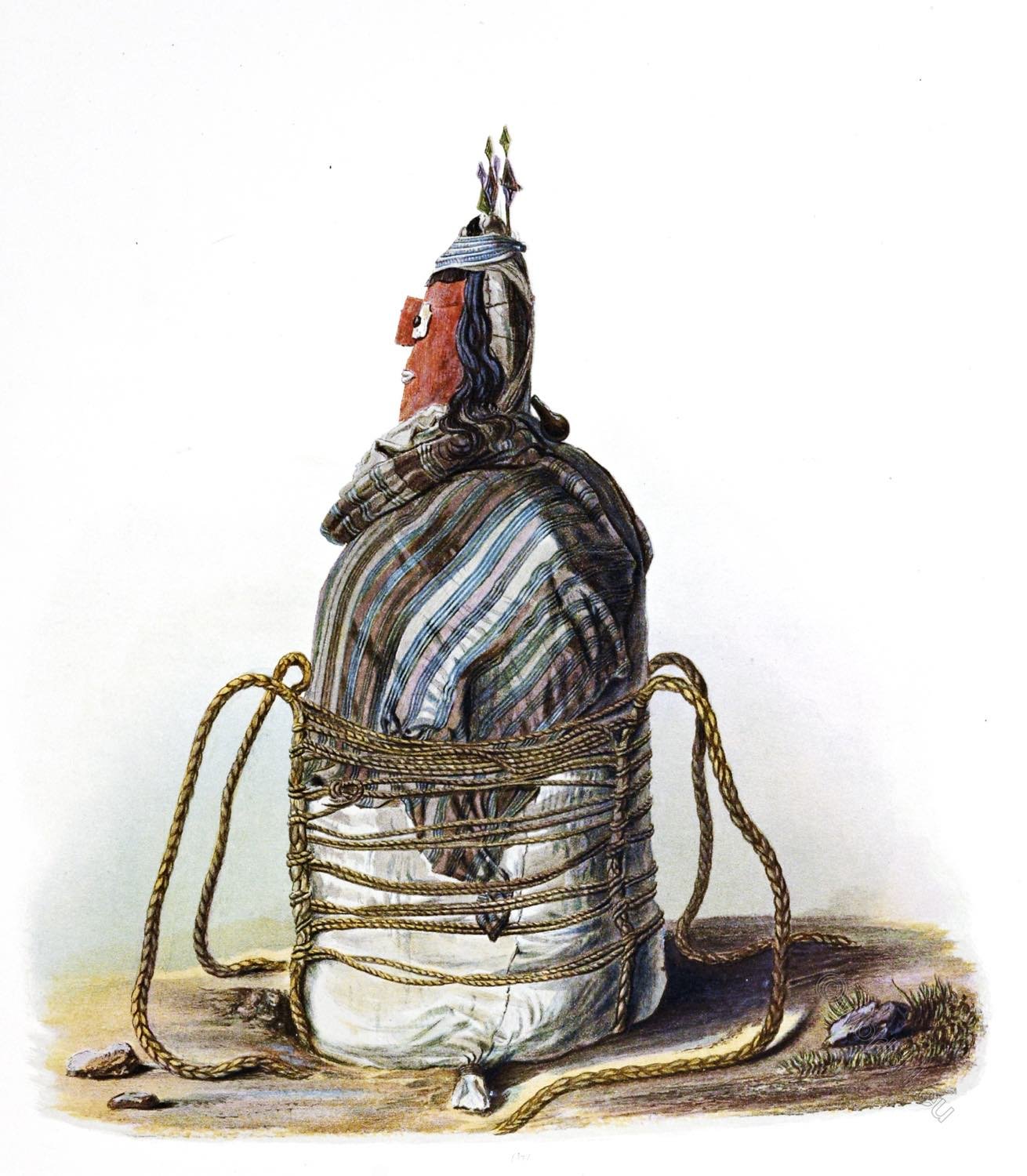
THE NECROPOLIS
by David Roberts.
In the valley which conducts to Petra, and which lies outside the “Chasm,” is the chief Cemetery. The ravine suddenly narrows to a space of about fifty yards, shut in by sandstone cliffs forty or fifty feet high.
Here commences the Necropolis. The tombs begin immediately on the right: they are numerous, but the first which peculiarly strike the eye are three on the right, strongly resembling those in the Valley of Jehoshaphat.
They are isolated masses of rock, fifteen or twenty feet square, cut away from the cliffs, and leaving a passage of several feet between. In one of them is a small sepulchral chamber, with a low door. Another has columns, but too much defaced to leave their order discoverable.
These tombs differ from those of Absalom and Zechariah chiefly in their being flat-roofed, and in their sides being slightly inclined in the Egyptian style. They are mentioned by Burckhardt. A little farther on the left, in the face of the cliff, is a tomb with six Ionic columns. Immediately over this is another, bearing four slender pyramids, sculptured on the rock, the only instance of the kind here.
The valley then contracts more and more, and the cliffs become higher, forming a street of tombs. The rocks are of red sandstone. 1) The large tomb on the left of the Engraving is curious, from its giving some idea of the Petraean style of embellishment.
The cornices and architrave, with the capitals and bases of the pilasters, were “let into” the sandstone, and were probably of some richer material, marble, if not bronze. 2) The whole must once have been a scene of stately melancholy.
3) Biblical Researches, iii. 415. 2) Roberts’s Journal.
Source: The Holy Land, Syria, Idumea, Arabia, Egypt, & Nubia, by David Roberts (British, 1796-1864), George Croly, William Brockedon. London: Lithographed, printed and published by Day & Son, lithographers to the Queen. Cate Street, Lincoln’s Inn Fields, 1855.
Discover more from World4 Costume Culture History
Subscribe to get the latest posts sent to your email.






